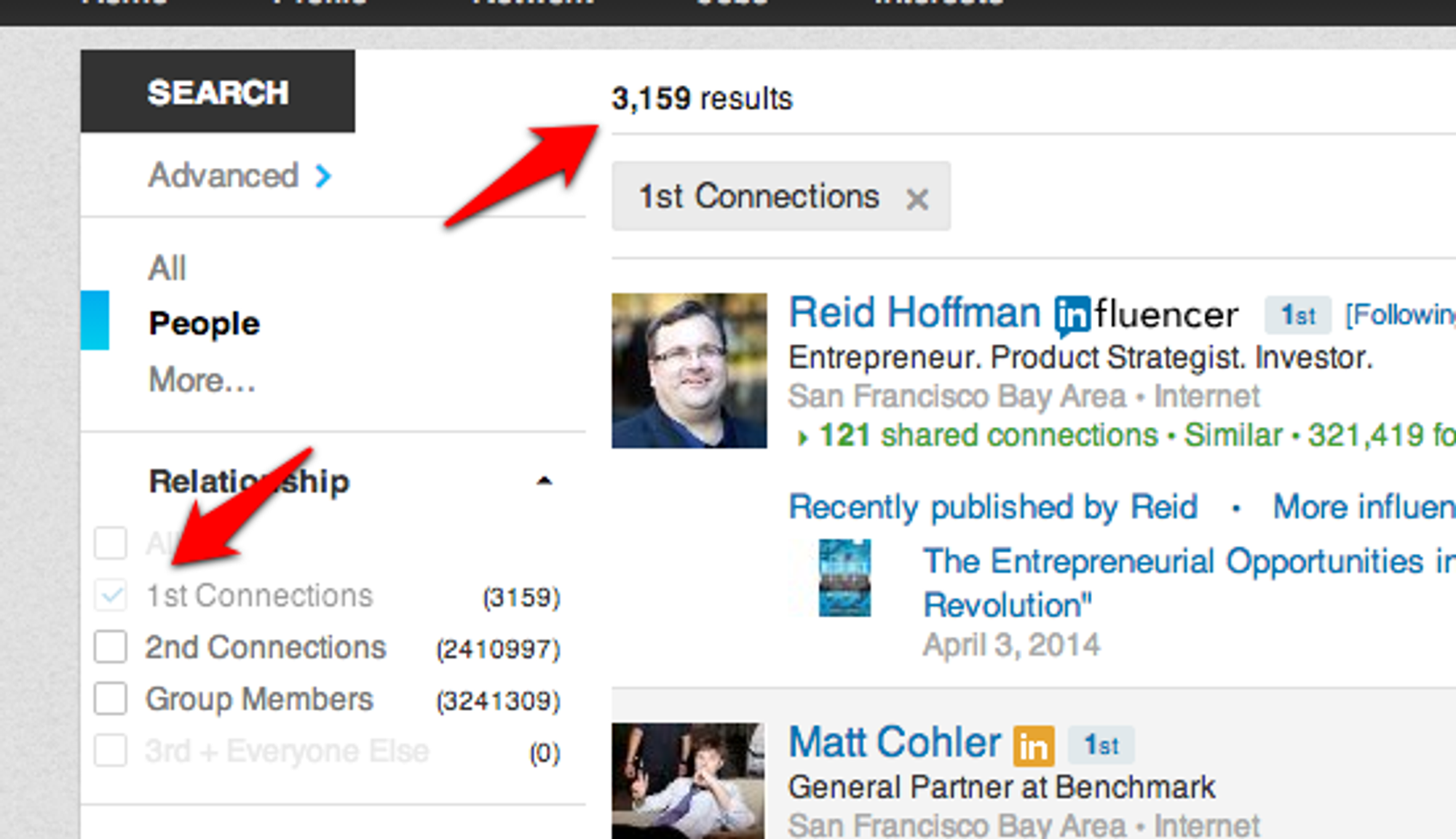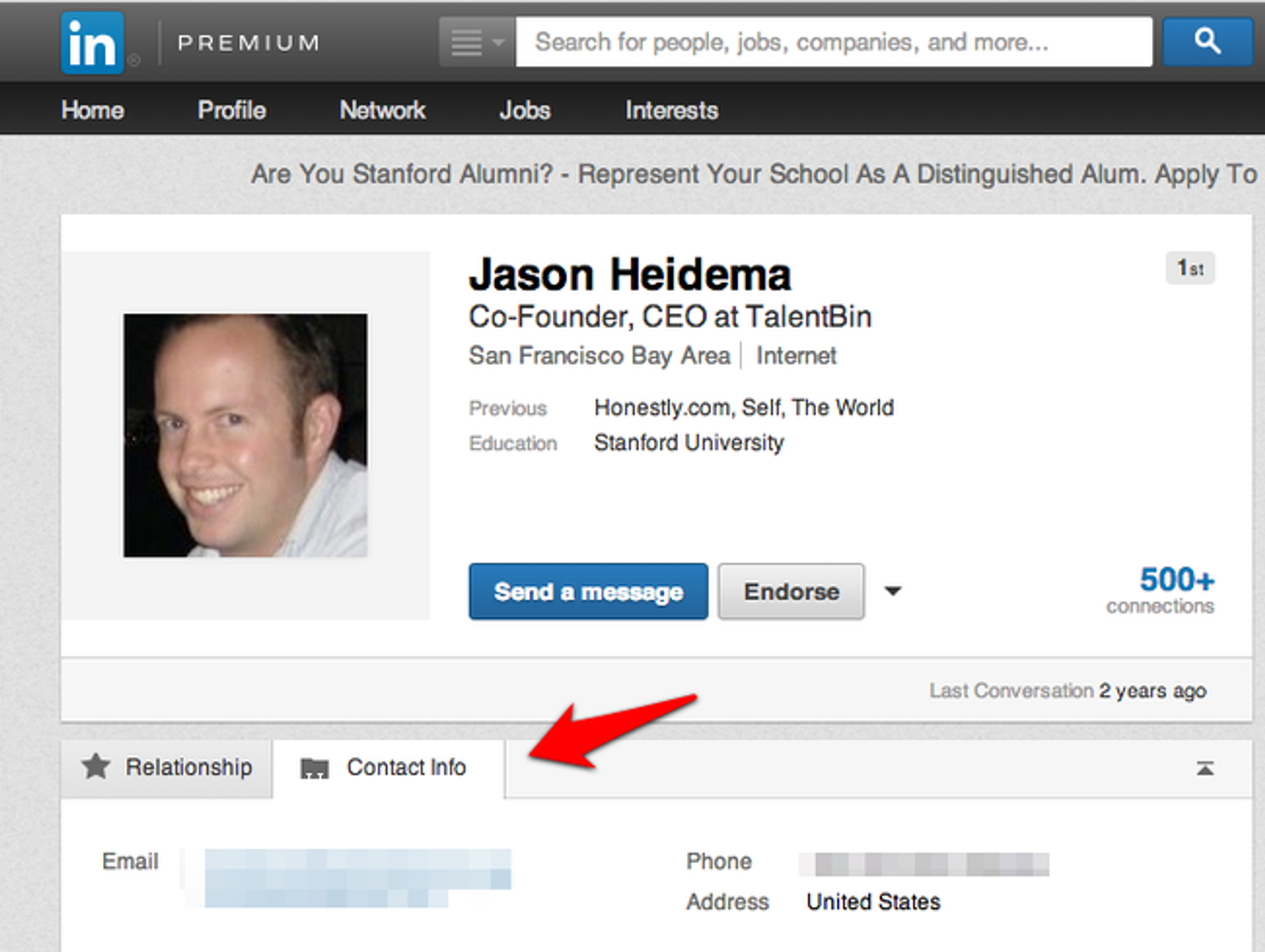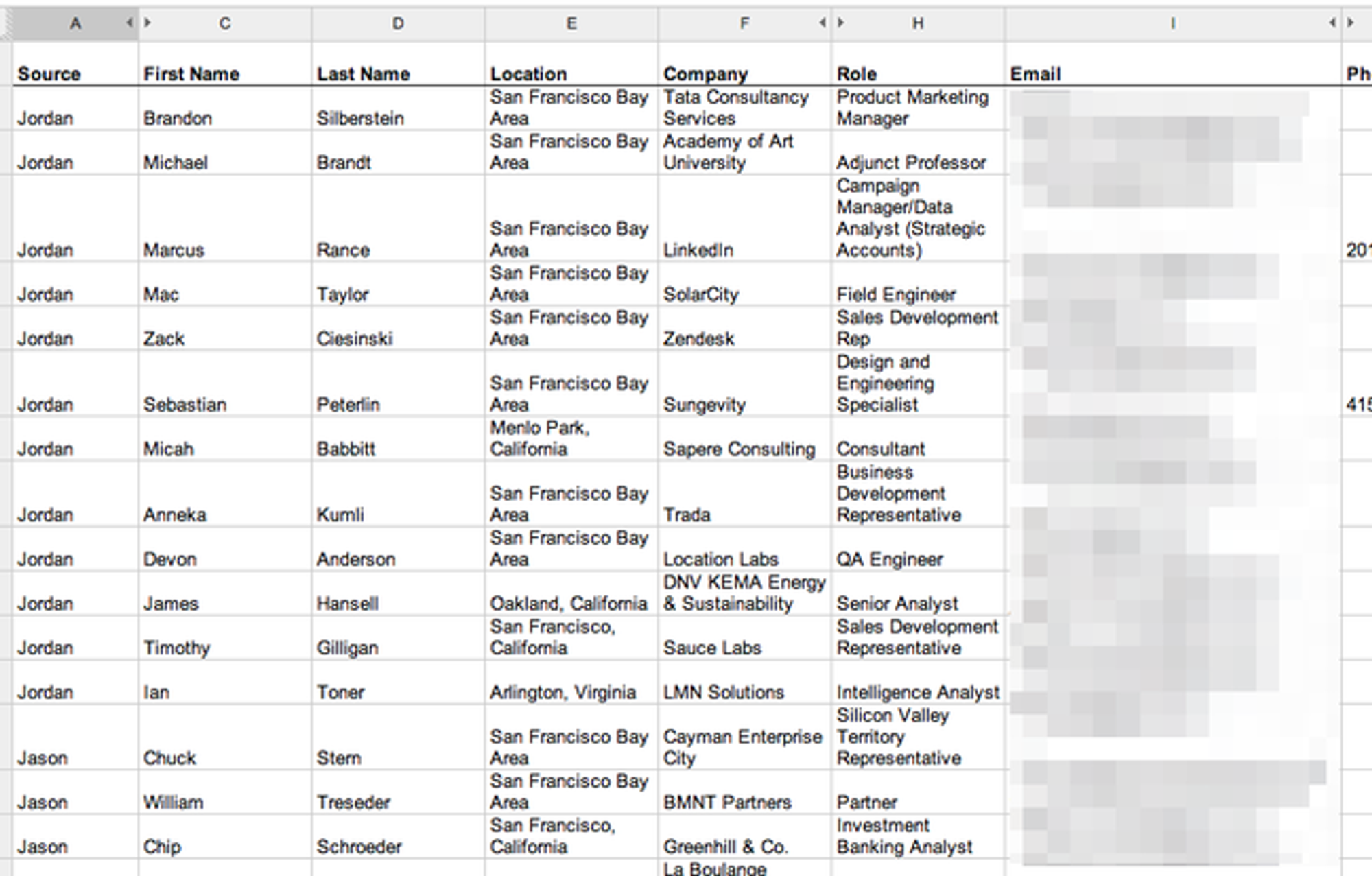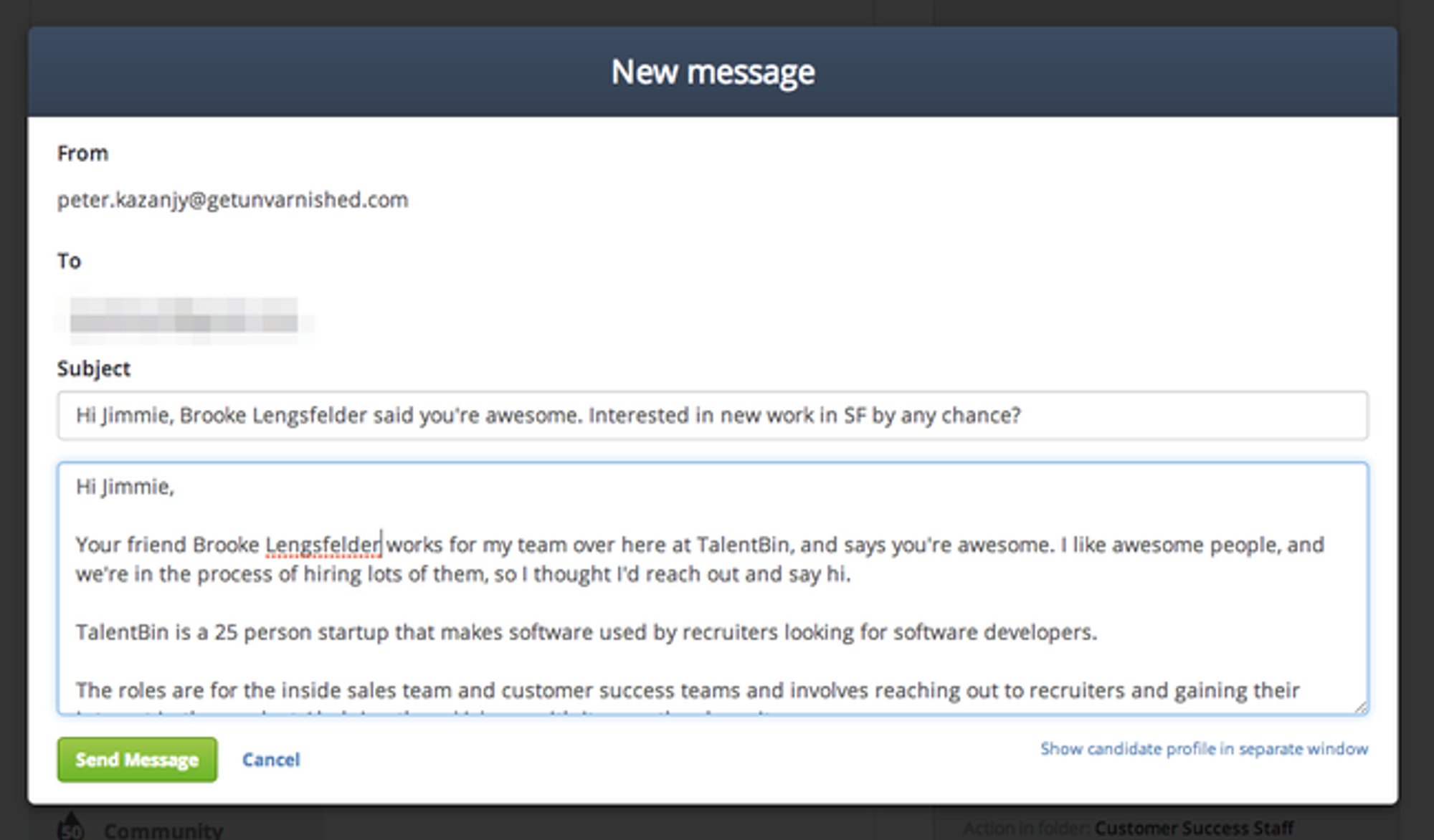This article is by Peter Kazanjy, co-founder of TalentBin, acquired last year by Monster.com.
99% of the time your best hires will come from your staff's combined network — you might already know that. But do you know how to go about mining that network so methodically that you get the most out of it? Probably not. As co-founder of talent discovery startup TalentBin, this is my bread and butter.
This article is about how to proactively mine all the networks you have access to for early-stage hiring excellence. As a startup leader, it's critical to land remarkable first hires because that's where your next hires will come from. A lot of people talk about this, but they rarely walk through the nuts and bolts of how to do it. The key: Aggressive referral recruiting.
Traditional referral recruiting looks like this: Your staff kinda knows what roles you have open, they kinda have an inkling about who in their networks might be a good fit, and they kinda think about this when they're not doing their actual jobs. But here's the thing: This watered-down system still yields some amazing hires.
So imagine the results when you pour some rocket fuel on the process.
The key is to make it someone's full-time job to 1) proactively mine staff networks, 2) extract reputation information from staffers about their networks, and 3) execute scaled outreach to the potential candidates that get surfaced.
There's an old saying, “If it’s everyone’s job, it’s no one’s.” This very much applies here. If you make finding great people your own job or hire a dedicated recruiter, it will get done. Leaving it up to people who don't have recruiting top-of-mind is not a recipe for success, no matter how big of a referral bonus you offer.
Instead, treat it like a sales campaign. You’ll get results. In my experience, when you approach problems like recruiting with a rigorous, B2B sales mindset, you will get good outcomes.
The Tried and True Approach
Top recruiting leaders implement this concept each in their own ways. Patrick Burke — now at Pebble, but previously at Apple, Square and Houzz — holds group referral recruiting sessions followed by individual debriefs. Tim Diss — formerly of Genentech and now at Facebook — runs a process he calls "ninja hunting," focused on proactively eliciting referrals from existing staff members. Tim Wenzel, formerly of Chegg used to have "recruit-a-thons" complete with chocolate fountains and pizza to get folks to volunteer their talented contacts. And Theresa Singh of Threadflip, Asana and Stripe is a fan of bringing groups together to surface names (and LinkedIn profiles) in a shared Google Spreadsheet.
At TalentBin, I refined my own approach to strip mining networks for the best possible people. It comes down to three things:
- Generating a ton of leads through deep network mining.
- Direct recruiting outreach leveraging social proof.
- Repeating the process over and over and over again.
Lead Generation: Finding the Best
These techniques can be used to find unicorns in any functional area from engineering to customer service to design. Over the last year, I've been focused on scaling a sales team, so I'll use that as my primary example.
What does it truly mean to mine your staff's networks? It's much more than asking them to pass along names of people they know.
If your organization is set up for success, your staff will be excited to intro their most talented friends and colleagues.
You should definitely offer a referral recruiting bonus. It varies, but generally speaking, $1,000 to $2,000 for non-engineering staff and up from there for good engineers is market rate.
Make it very clearly quid pro quo. Your employees surface their best contacts for you (or your designated referral recruiter) to reach out to, and they assist in selling the role if the candidate makes it that far down the hiring funnel. If the person gets hired, your staffer gets the bonus, gets to work with a talented person, and accelerates the value of the company through the acquisition of high-quality human capital. And they hardly have to do any of the work themselves. Sounds like a sweet deal, right? Make sure they know that too.
When you do this lead-gen exercise, emphasize that you're not only asking for people who are actively looking for work, or people who might change jobs soon. That's too limiting. The only piece of data you should care about extracting is this: "Does this person meet our hiring standards?"
All other information can be collected elsewhere, but this reputation data — validated by a trusted source you have in-house is not available anywhere else. That's the most valuable piece of this entire process.
I make a point of reminding any staffer whose network we're mining about the criteria we're looking for repeatedly. You want to ask everyone the same two questions:
Would you be proud to have this person as a co-worker? Would you be excited to have them work here?
For example, when we were hiring for TalentBin's sales team, we provided the following ground rules: "We hire for high intellectual capacity (general smarts); high figure-shit-out capacity (street smarts); and a high grinder quotient (the ability to work through unpleasant situations to get things done)." You want to surface these qualities at the beginning of any network mining session.
Running a session like this should take about 30 minutes per person on average. This might sound like a lot, but you'll end up with a golden rip list of awesome talent to push down your hiring funnel. It's a sucky manual task, but it's worth it. All it takes is time, some elbow grease, and Google Docs.
What follows is a rundown of how to work with your employees to mine their networks.
What to Do with Your Leads
At TalentBin, we developed some in-house browser plugins to help our lead gen team easily pull metadata out of profiles, but the minimum need is a Google Spreadsheet with a couple of key fields.
First, who is the referrer? This becomes important later. You also want to capture the hyperlink to the candidate's LinkedIn or Facebook profile for later reference, and their email address. Consider including a field for notes and status updates as needed. Here's a rough example:

How to Flag the Right People
Have your employee log in to LinkedIn and do a "first degree network" search to return all of their immediate connections. This is the link for that search (if you or your staffer clicks here, it'll automatically populate that search for you).
You should see a search page with the same number of results as the person has contacts.

Once you have this list pulled up, you and your employee should walk through each result, applying the selection criteria you've thoughtfully created.
I find it most helpful to read the names aloud one by one to keep things rolling. "Jeff Williams?" "Sanjay Patel?" You'll find this will be slow to start, but you'll get into the groove. I'll say it again: You need to remind your colleague of your selection criteria constantly, because they'll inevitably slip back into a mindset of "hmmm, I don't know if that person is looking..." You want more than that.
As you start compiling people who do meet your hiring bar and job description, snag the hyperlink to their profile and drop it into your Google spreadsheet. Don't worry about other details like name, email, etc. just yet. You can fill all of that info out later without using any more of your staffer's time.
During this process, folks will inevitably provide additional metadata like: "Oh, yeah, he hates his job and is totally looking and we'd be lucky to get him." Record all of that qualitative information in your notes column. Just remember that the overarching goal is to capture the super set of all high-quality folks your staffer knows, regardless of how much "job seeker intent" these people may or may not have.
Your typical employee will have a couple hundred LinkedIn connections, of which you'll probably grab 5% to 10%. I recently went back and looked at our exercises and compared them to LinkedIn connection counts. They all fall right in that range.
In a half hour, you can rip through 500 contacts and end up with a high-quality list of 25 to 50 strong candidates.
So, that's LinkedIn. Now we're going to do the same thing with Facebook.
Why Facebook, you ask? Aren't LinkedIn connections the "professional" connections you're looking for? Yeah, kinda. But people suck at documenting their full social graphs on LinkedIn. Only people in sales and recruiting are good about that. Most of your employees will not be. Trust me. Think of all the great people your staffers have met and worked with in college and at previous jobs. These people are more likely to be their Facebook friends. When you forego these prospective candidates, you do so at your peril.
Have your employee pull up their friends list and repeat the same process, with you sitting right there systematically running through their contacts. Flag the good ones just like you did before. In my experience, the average staffer will have around 250 friends on Facebook, so this phase should take a similar amount of time.
If your colleague has a lot of contacts, you might be tempted to throw up your hands and say, "Holy crap, that's too much!" Resist this temptation. Huge social graphs are a boon. According to sociologist and Stanford Professor Mark Granovetter, people have fixed and helpful opinions about even their weakest ties, and this makes them strong. No matter how long ago your staffer knew a person, they probably have a sense of whether they are talented enough or have the spark you're looking for.
When you're done with this stage, you'll have an even more solid list of contacts your employee thinks are awesome. You'll have the hyperlinks to their social profiles, and you'll have all the metadata you've collected in the process. These are high-quality leads. Get stoked for the next part of the process.
Mining Contact Information
Now it's time to play detective and find email addresses for everyone on these lists. Email is by far the most effective, scalable way to reach out to promising leads. Make it a homework assignment for your staffer to fill in as much email contact data for their list as they can.
Where else can you find this information? For LinkedIn, email addresses are actually available behind the "Contact Info" tab on people's profile pages if you're connected to them.
For Facebook, getting email addresses is more of a pain in the ass, but they're probably somwhere in your employee's Gmail, even from years ago. Worst case scenario, you can use Facebook messaging and LinkedIn InMail as a fall back. Try to avoid this as much as possible, though. Direct email is always ALWAYS better for recruiting (more on that later).

When you're done with this, give yourself a pat on the back. You've successfully pulled hot leads from one member of your staff. Now go do the same thing for the others, and you'll have a fierce list of prospects.
It's even better when your staff has overlapping networks and they end up recommending the same people. That gives you more reputation validation, and the best candidates rapidly rise to the top.
So what should this list look like when you're done talking to everyone? Something like this:

There's gold in a list like that. Now let's go get it.
Scaled Outreach: Taking Your Message to the Streets
Lead generation is important, but it's not sufficient on its own. We have to execute the outbound part of the process.
Let's say you have 5 people on your team, including you. After this exercise is done, you should have something like 250 people in your hiring pipeline.
Templating: What to Send?
Introducing these people to your company is going to involve scaled email outreach that leverages social proof (namely, that the referrer they know already works with you). But ultimately, this is all about direct, templated and repeated contact.
You should create a templated message that points to the job openings you're hiring for and heavily emphasizes the implicit endorsement of their referrer. Here's the communication series that has worked time and time again for me:
1. First Outreach: A simple "Hi, how are you doing?" that references the fact their friend works with you, and includes high-level messaging about what your company is doing. This message definitely needs to provide hyperlinkes to job postings to ensure that they can see more, and register a "click" for you to gauge interest. People who open and click, especially multiple times, are exhibiting interested behavior (even if they don't reply right away). You should note who they are and invest more attention in them.
2. Follow Up: A "Hey, in case you missed my first note" rendition of #1. Same requirements, just with a small tweak to the first paragraph acknowledging that this is a second touchpoint.
3. When They're Interested: If you get this response, immediately send over a set of fun written screening questions. If they make the effort to answer them, you know they are serious about looking. This is also a lower barrier to entry than an immediate phone screen or interview. And it requires less work on your part too.
4. When They're Not Interested: When someone writes back "thanks but no thanks," be sure to respond with the ask that they pass the details of your open positions to their friends and colleagues. You want your information driven along the referral path to their similarly high-quality friends.
How to Send?
This system worked extremely well when I was on the hunt for market development and customer success reps. You can see the exact templates I put together here.
In my case, all of these templates were housed in my TalentBin account, so I could use the integrated email system to track opens and clicks. Here's what an average message would look like:

All of this is much easier when you have a mail-merge tool. But you can also use something like Yesware with your Gmail (I love Yesware for its open and click tracking features). If you can't swing that, a Google Doc with your templates and straight up Gmail get the job done too.
Be sure to notify your staff when you start sending out emails. This enables them to send some sort of outreach themselves if they want to (they shouldn't have to, but if your employees want to pitch in, that's a bonus). Also, they might hear from their contacts saying, "Hey, your colleague Pete reached out. What's the deal over there?" You don't want them to be caught off guard. When they're prepared, they can help sell the position. Always give them a heads up.
Handling Responses and Second Passes
Now, go send those 250 messages. Put on some fast music and rip through all of them in one go. Flag them in your CRM or on your spreadsheet as "attempting to contact" so you can monitor status as replies start to roll in. That's how you keep great people from falling through the cracks.
At this point, you've done some honest to goodness headhunting.
If your message was solid, and the social proof was influential, you'll get a lot of interested replies. Deal with those first. They're the "closest to the money," as one might say. Use your template to push them into the written screening part of the process. For all the negative responses, flip them the ask to share with their networks.
Don't underestimate the importance of responding to rejection. One of our recent hires at TalentBin came from me sending my template to someone who said, "Thanks, no thanks," who then passed it to a professor at Stanford who runs a startup job list. He pinged it out to a bunch of folks and we ended up with a number of interested candidates and a hire. It really does move the needle to send uninterested folks the "Gee thanks, can you pass this along? We're killing it, and people really like our product" note.
If they make good on your ask, you'll see a second wave of inbound interest. Regardless, you're on your way to getting butts in seats.
This is all well and good, but there are still going to be those prospects who don't respond to you at all. If you're using something like Yesware, you'll still be able to see who opened and clicked on links but didn't reply. For these folks, use your "follow up" template. It might take some furious copy-pasting, but you'll be done in no time.
You'd be AMAZED by how much a short follow up helps. It gives you the chance to prove all kinds of things:
- You're not just a drive-by emailer. You're serious about them as a candidate.
- You have persistence and gumption, which says a lot not just about you, but your company and its leadership.
- You make it clear that you are really interested in them, so your behavior supports your messaging. You're not just all talk.
- The more you can cement your story through action, the better. Make sure the person who referred the candidate knows you are sending the follow-up too, so they can validate that your company isn't just spamming, they are special.
Can You Outsource This?
Extra credit if you want to send a "I'm breaking up with you / I guess you're just not that into me" template a few days later to all non-responders. That always gets some good laughs and responses if you do it right.
Yes. You can have someone else do all of this work for you. In fact, if you're in the midst of scaling your sales team or engineering team and have a contract recruiter in-house, running this system should be their number one priority.
Rinse, Repeat
They can sit down with each person, they can do the lead generation, and, most importantly, they can execute the outreach as you. Most recruiting CRMs let you delegate communication so that recruiters can send emails that look like they're coming from your VP of engineering or the CEO. Those always get a higher response rate. Period.
The process outlined above is not a one-time thing. Think about it. For every new hire that you get out of this system, they bring about 500 new contacts to the table that you can mine and recruit from too. It's the gift that keeps giving.
This shouldn't be a one-time thing for your existing staff either. I recommend revisiting the talent mining process on a quarterly basis, or twice a year. Your team is constantly out there meeting new, awesome people and conveniently connecting to them on Facebook and LinkedIn. Make sure to scoop up those deltas on an ongoing basis.
Go Forth
Yes, it would be great to instill a mindset of "always be recruiting," so that whenever an employee meets someone great they come running right to you. But this doesn't happen in real life. They have their own jobs, and you want them to be focused on that.
None of what I suggest above is terribly complicated, but I find that it's helpful to have it written down and plotted out.
Catching the best candidates in your network is a grind. You have to sit down, prioritize, and methodically work through a less-than-pleasant task from beginning to end. Again and again. But you'll be happy you did.
I've used this approach to staff seven extremely high-quality market development reps (and have another half dozen in the pipeline that will probably end up getting hired). All of them were drawn from the network of our existing staff.
The takeaway: Once you have access to your team's extended network, do your damnedest to leverage it as the top-value asset it is.
